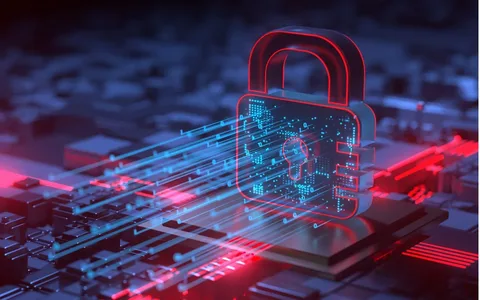It is now the age of ever-changing scams and threats to businesses, and as such, businesses must prioritize the necessity of having a solid cybersecurity strategy in place. The Cybersecurity Maturity Model (CMM) serves as a critical tool in arriving at this by helping organizations structure an assessment and improvement of cybersecurity practices. The entire organization can be strengthened and protected from sophisticated cyberattacks when we improve cybersecurity maturity, control risks, bolster resilience, and more. Using the CMM framework, this article explores the process of how to assess and improve an organization’s cybersecurity posture.
What Is a Cybersecurity Maturity Model (CMM)?
A Cybersecurity Maturity Model is a structured framework to determine the extent of an organization’s cybersecurity capability. For instance, it assists businesses in highlighting the weak points, giving priority to the activities of risk management and the controls to be put in place to strengthen their security posture. The CMM is a roadmap for organizations to become more cybersecurity resilient, by the way. By being able to track their progress, benchmark their practices, and continue to increase their defenses against new threats, businesses are able to make the most of the information being collected.
Furthermore, this model is valuable not only to optimize current security practices but also to provide a method for improving plans for future practices. Yet businesses facing an increase in complexity and frequency of cyber threats have a better chance of mitigating such risks and safeguarding valuable assets if they are geared to enhance their cyber maturity.
Key Components of the Cybersecurity Maturity Model Framework
The most effective Cybersecurity Maturity Model frameworks have the following essential components that make an organization ready to manage its cyber risk. These components ensure a holistic approach to security:
- Governance and Policy: To make sure good cybersecurity is around, it is essential to set up clear governance structures, roles, responsibilities, and policies. It assures that the decision-making is congruent with organizational goals and that the security responsibilities are clear-cut.
- Risk Management: A maturity model is, first of all, anything that helps you identify, assess, and mitigate, or at least reduce, the risk that your organization faces. It allows organizations to put effort into the risks that can have maximum impact.
- Technology and Tools: Any CMM framework must incorporate the deployment of effective security technologies. It consists of firewalls, intrusion detection systems, and data encryption to protect sensitive information.
- Processes and Procedures: Standardizing cybersecurity processes and procedures ensures that security measures are consistently applied across the organization, reducing the likelihood of human error and enhancing operational efficiency.
- Workforce Development: Continuous training and development of staff are essential to ensuring that employees can effectively recognize, respond to, and mitigate cyber threats.
- Continuous Improvement: The organization’s security details should evolve as fast as cyber security threats do. Regular evaluation, audit, and update to the security framework in order to guarantee that the security framework stays effective and flexible until it becomes mature.
Popular Cybersecurity Maturity Models
There are several widely adopted Cybersecurity Maturity Models that organizations can implement, depending on their industry and specific needs:
- NIST Cybersecurity Framework (CSF): The most common one among the models is the NIST CSF, which follows five core functions, namely Identify, Protect, Detect, Respond, and Recover. In summary, this framework will be beneficial to organizations from all industries who plan on creating a scalable cybersecurity posture.
- C2M2 (Cybersecurity Capability Maturity Model): The C2M2 model was conceived to be used in the energy sector but has since been applied to other industries. In that respect, it’s focused on how to assess and improve cybersecurity capabilities for ten domains, which means it should fit well in organizations of a range of sizes and complexity.
- CIS Maturity Model: The CIS Maturity Model is based on the Center for Internet Security’s controls that offer a practical way to secure IT systems and increase situational awareness. Rather, it discusses important aspects like asset management, vulnerability mitigation, and incident response.
- ISO/IEC 27001 Maturity Model: This model is directed especially toward information security management systems (ISMS) and they fit international standards. It offers a system for managing sensitive data and compliance with global security laws, such as the FCC 2008.
Steps to Assess and Enhance Your Cybersecurity Maturity
To successfully implement and enhance a Cybersecurity Maturity Model, organizations must follow a structured approach:
- Assess Your Current Cybersecurity Posture: Firstly, a major part of your endeavor should include a comprehensive analysis of the present cybersecurity strategies that you have in place. Get an understanding of vulnerabilities, check the effectiveness of your present controls, and have a look at the overall level of maturity of your organization.
- Define Objectives and Goals: The use of the CMM framework should clearly define what you want to achieve with it. Define the goals and set a TARGET you should attain with reasonable measures to achieve them.
- Select the Right Cybersecurity Maturity Model: Choose a framework that fits with your organization’s industry, risk appetite, and regulatory requirements. An early consideration, in our opinion, includes the size of your organization, availability of resources, and security requirements.
- Develop a Roadmap: Once your model has been chosen, work out a roadmap – a long but specific list with various steps, timelines, and persons assigned to achieving your cybersecurity objectives. They should align with your business goals and focus on the most urgent gaps, but most importantly, it is the plan, not something that will change soon or after some time.
- Implement Security Controls: Based on the selected model, deploy appropriate technical and procedural controls. This may involve strengthening your network defenses, implementing multi-factor authentication, or improving incident response protocols.
- Monitor Progress: Regularly assess your cybersecurity maturity using key performance indicators (KPIs). Monitoring helps track the effectiveness of implemented measures and allows for adjustments as needed.
- Continuous Improvement: Cybersecurity is not static, and neither should your maturity model be. Ensure regular evaluations and updates to your security measures to stay ahead of emerging cyber threats.
Conclusion
Assessing and enhancing your organization’s Cybersecurity Maturity Model framework is a vital step toward securing sensitive data and ensuring business continuity in today’s complex digital environment. By adopting a structured, strategic approach to cybersecurity, businesses can build a resilient defense against evolving threats while continuously improving their security posture. Whether through the implementation of frameworks like NIST, CIS, or ISO/IEC, the goal is clear: to create a more secure, adaptable, and future-proof cybersecurity environment.
To read more similar stories, click here




